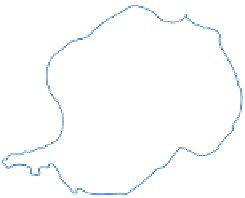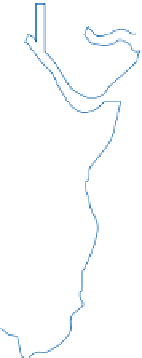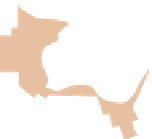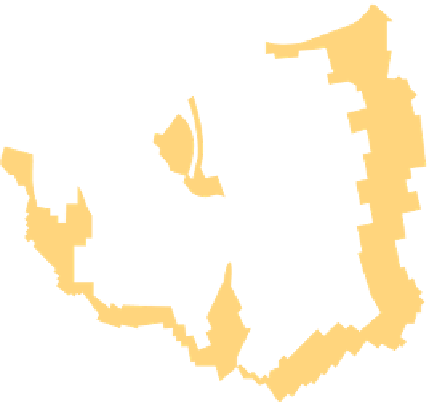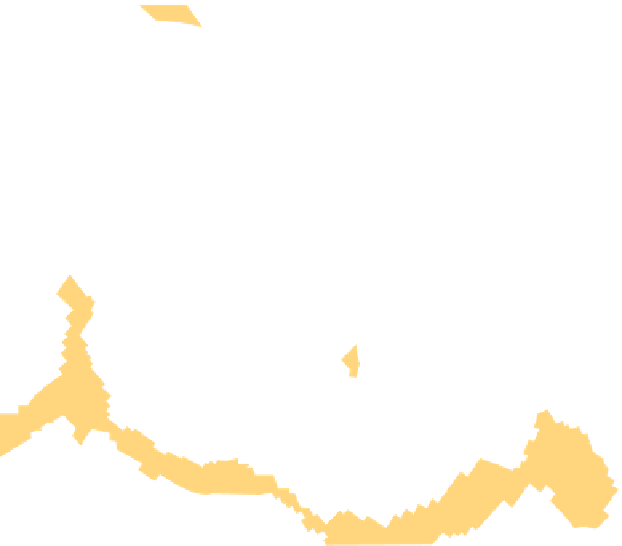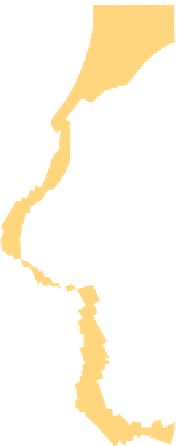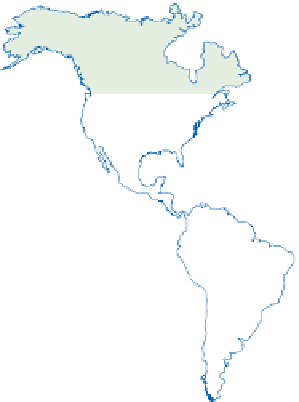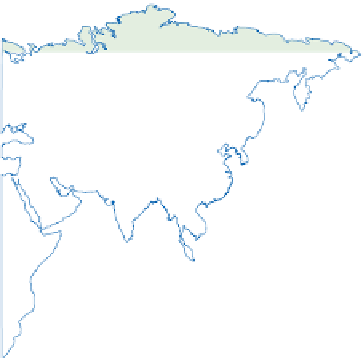Geoscience Reference
In-Depth Information
Panthalassic and Tethys Oceans were also under attack
from the eastward fragmentation of Gondwanaland and
its collision with Eurasia. The Tethys connected briefly
with the developing Atlantic to form a narrow, equatorial
Cretaceous ocean before closing like a zip. Biogenic
sediments in its marginal basins and epicontinental seas
now form the world's principal oil reserves. The 'zip' did
not close smoothly, and early Euro-African collision in the
west less than 140 Ma ago allowed younger rifts in East
Africa and the Red Sea-Gulf of Aden-Persian Gulf region
to develop in the east (
Figure 11.3
).
The Red Sea and Gulf
of Aden are flooded rifts but, so far, without sea-floor
spreading.
India and Australia broke away to the north-east,
opening up the Indian Ocean behind and closing the
eastern Tethys ahead, culminating in the Cenozoic
India-Asia collision 40 Ma ago. Continuing indentation
of India into Asia nudges south-east Asia and China
eastward to aid the consumption of the north-west
Panthalassic Ocean. The Pacific Ocean is its diminutive
successor, almost completely refloored since break-up.
The oldest surviving early Jurassic floor is now subducting
in the Marianas trench, compared with younger Cenozoic
crust beneath Peru and Quaternary crust beneath
California and Mexico (
Figure 11.4
).
The Tethys survives
Tethys Ocean
Persian
Gulf
Red
Sea
India (45ma)
India (70ma)
Africa
Antarctica
Australia
he
r
Figure 11.3
Progressive continental rifting of eastern Gond-
The Red Sea divergent plate boundary and associated East
African-Middle East rifts may mark the birth of a future ocean.
LONGITUDE
60°
120°
180°
120°
60°
0°
80°
80°
60°
60°
40°
40°
20°
20°
0°
0°
20°
20°
40°
40°
60°
60°
60°
120°
180°
120°
60°
0°
Mid-ocean ridge (offset
along transform faults)
Shelf
<23 Ma old
23-59 Ma old
59-144 Ma old
144-190 Ma old
Source: After Scotese et al. (1988)








